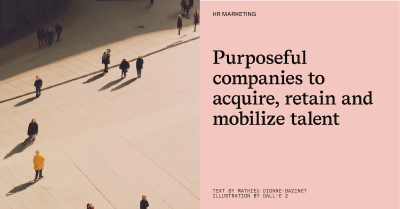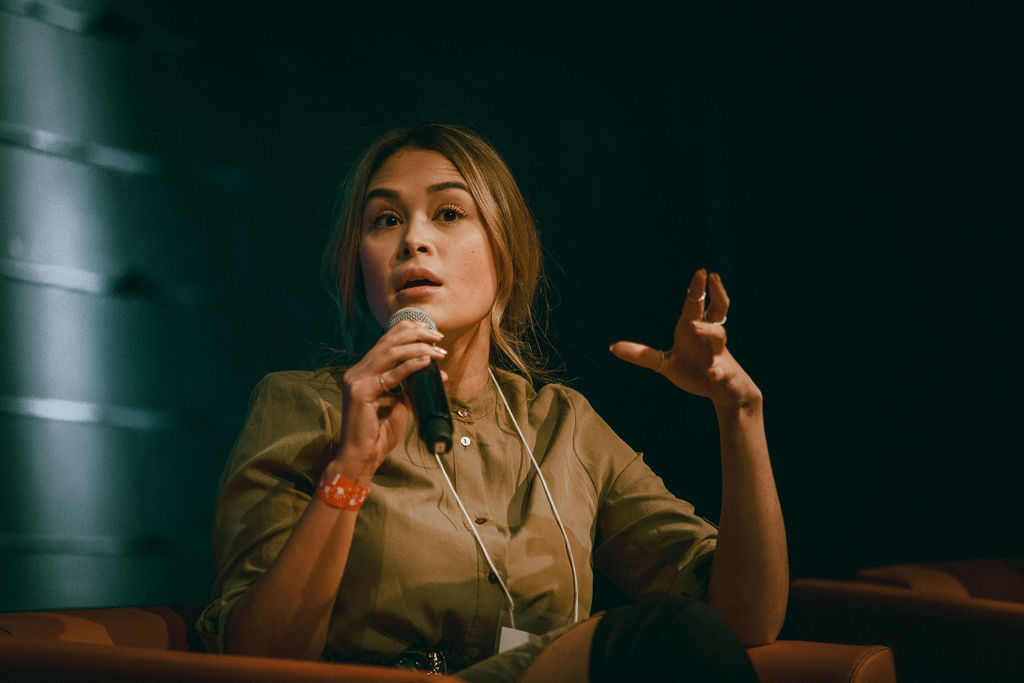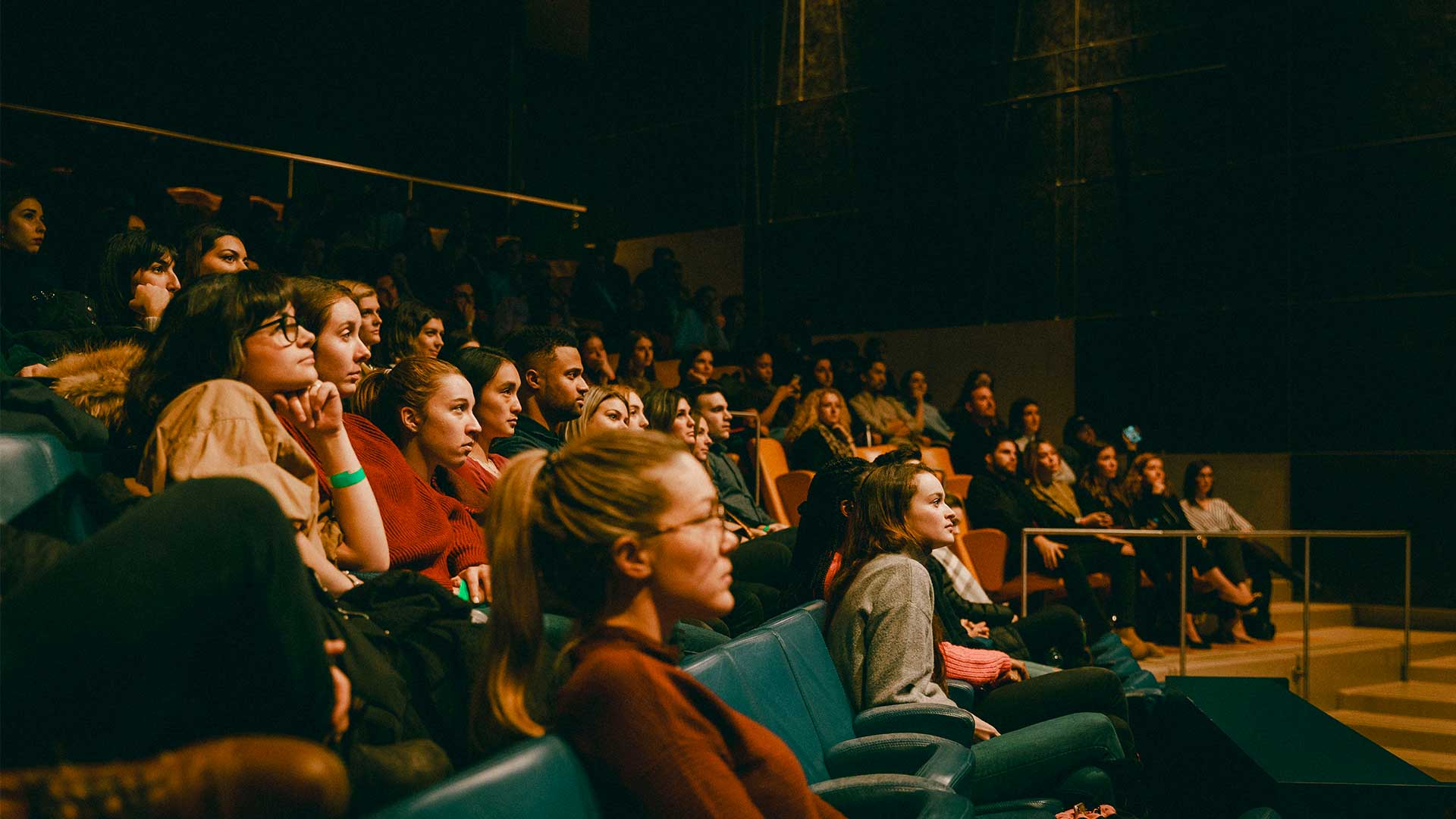
HR Marketing: Purposeful companies attract, retain, and mobilize employees

When does influencer marketing become an issue for influencers and brands credibility? That’s the question that many influencers and chiefs of marketing are probably wondering right now. And that makes sense! While gaining and preserving followers trust have become challenging for brands, Netflix adds fuel to the fire with its new documentary Fyre Festival.
Nonetheless, influencer marketing is still growing and evolving to match the desire of consumers to be exposed to authentic content. That’s what came out last Wednesday from the conference at HEC Montreal, “Influencers and brands: impactful collaboration,” hosted by J-P Shoiry. Isabelle Randez, Julianne Robert, Debbie Cabana, the representatives of L’Oréal, Groupe Park Avenue and Air Transat, shared their thoughts on the evolution of content marketing along with the influencers Julie-Anne Ho from Occupation double (O.D.), the artist Chloé Sabourin and the businessman behind Beach Club, Olivier Primeau.
Watch the full video of the panel here
“When I watched Fyre Festival, I got sick, said Olivier Primeau. Event planning is everything but what he did! We create the product first and then sell it. I can’t deny that Billy McFarland completely understands influencer marketing, but he has no integrity.”
Integrity and credibility. Two words that animated the discussion between the guest speakers with good reason. Indeed, they echo the peak of brand storytelling, a symbol of authentic content marketing. And to reach this authenticity, brands have to create true relationships with influencers that are beneficial to both.
WIN-WIN COLLABORATIONS
“We’re looking for win-win collaborations, says Julianne Robert, from Groupe Park Avenue. We want to get closer to our community by collaborating with influencers that share similar values. We won’t work with an influencer who’s collaborated with a competitor because we want to preserve our credibility.”
“Anytime a company reaches out, I tell them that I want to keep my creative freedom.” - Chloé Sabourin, artist
Followers can give their trust as fast as they can take it back, and that’s the reason why brands and influencers have to build true professional relationships. The proof is, models Bella Hadid, Kendall Jenner, Emily Ratajkowski, Hailey Baldwin and Elsa Hosk didn’t get out of the Fyre Festival drama intact. While they’re facing subpoenas, their involvement in the promotion of the ill-fated festival considerably hurt their brand.
While brands have to do some in-depth researches on the influencers with whom they wish to collaborate, influencers, have to make sure that the brands are trustworthy for the sake of maintaining their followers’ trust.

“When I went to O.D., I had 3000 followers, but when I got out, I had 170 000, says Julie-Anne, who is still exploring influencer marketing. But I neither want to deviate from my values nor compromise to make money.”
One can understand it, and we won’t stop repeating it, authenticity and credibility will remain important this year. And despite its success, many brands wonder if influencer marketing is relevant, especially since it’s hard to measure its impact.
“Selling isn’t our first goal. To this day, it’s still very hard to measure the true impact of influencer marketing. We essentially want to improve our brand love and the consumers’ interest.” - Isabelle Randez, L’Oréal
But the true challenge for brands isn’t to figure out if influencer marketing is relevant, but to understand how to use it.
WHEN TO USE INFLUENCER MARKETING
Influencer marketing is part of the marketing ecosystem and the consumer’s experience. Used strategically, it can be a profitable way to get sales for brands.
“We use influencer marketing to inspire, explains Debbie Cabana, from Air Transat. When we organize travels, we ask our influencers what they’d like to experience. For instance, Sarah Couture explored Europe for the first time with us. We create personalized experiences for each influencer and therefore, at second hand, for their audiences.”
But to understand this life-cycle model of consumption, brands have to understand who their targets are and what their consumption habits are before finding the right influencers to share their services. How much time is there between the moment when the consumer thinks about buying a product and the day they buy it? When will they be interested in the product? Asking these questions is important to understand how and when to use influencer marketing.
“No one buys a car after seeing a campaign with an influencer, says Julianne Robert. That’s why, at Groupe Park Avenue, we don’t have sales objectives, but brand awareness objectives. We want to remain at the top of the consumer’s mind so that when they decide to buy a car, they think of us.”
But be careful, a formula that works for one brand, won’t necessarily work for another one. While brands like Air Transat, L’Oréal and Groupe Park Avenue build long-term relationships with their influencers, for others, creating stunts that will bring results quickly is the way to go. Each brand has to find the most efficient strategy.
“Influencer marketing at Beach Club represents 100% of our marketing. Our business model is influencer marketing, insists Olivier Primeau. We only sell tickets online and they are always sold before our events thanks to influencer marketing.”
TO CONCLUDE
No matter what the objective behind each collaboration is, whether it be generating fast sales or brand awareness, influencers and brands always have to think about the impact behind every partnership.